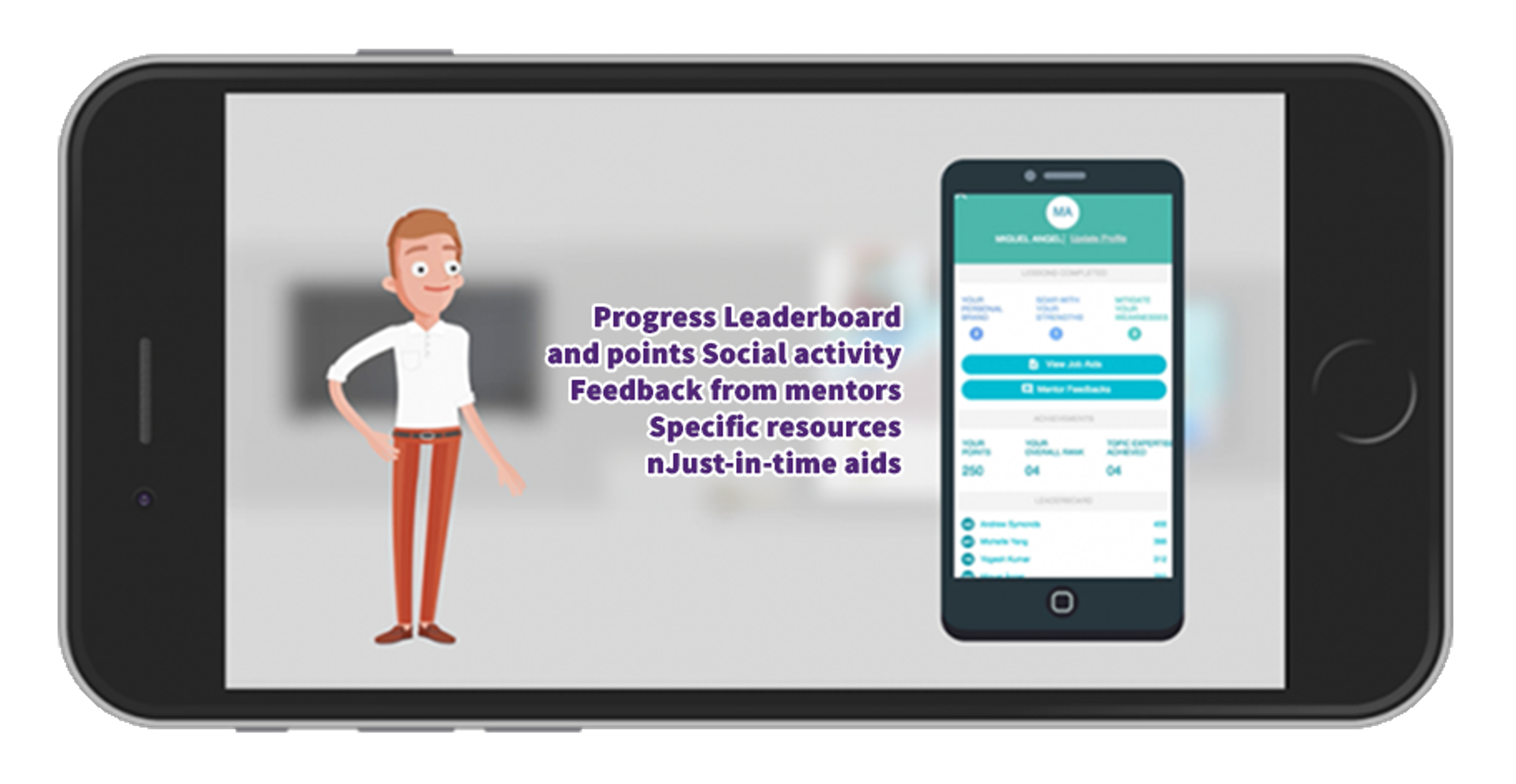
Video-based learning has become an important part of corporate training delivery today. This article provides insights to help you identify the most effective training videos for your employees.
What Are Employee Training Videos?
Employee training videos are specialized video content designed to educate and train employees in various aspects of their jobs. These videos can range from instructional guides, policy overviews, to skill development modules. They are a modern tool for disseminating knowledge and skills within an organization, adaptable for a variety of purposes – from onboarding new hires to updating staff on new procedures or technologies. Their versatility allows them to be used across multiple departments and for a wide array of training needs.
Benefits of Using Videos in Employee Training
- Enhanced Engagement: Videos capture attention more effectively than text-based materials. Their dynamic and visual nature can make learning more engaging and interesting.
- Consistent Training Delivery: Videos ensure that every employee receives the same training content, maintaining consistency in message and quality across the organization.
- Flexible and Accessible Learning: Videos can be accessed anytime and anywhere, accommodating different learning paces and schedules. This flexibility supports a more inclusive learning environment.
- Improved Information Retention: The combination of audio and visual elements in videos helps in better retention of information. Learners are more likely to remember what they’ve watched compared to what they’ve read.
- Cost-Effective in the Long Run: While the initial production might be costly, videos are a cost-effective solution over time. They can be reused for multiple training sessions, eliminating the need for repeated live sessions.
- Support for Remote Learning: In the era of digital and remote work, videos play a crucial role in training employees who may not be physically present in a traditional office setting.
- Catering to a Multigenerational Workforce: Videos engage employees across generations, from Baby Boomers to Gen Z, by offering a flexible and dynamic format that suits different learning preferences, ensuring content resonates with everyone.
Why Create Training Videos for Employees?
- Adapting to Modern Learning Preferences: Today’s workforce prefers learning resources that are concise, engaging, and visually appealing. Training videos meet these expectations, making them an ideal learning tool.
- Enhancing Learning Outcomes: Videos can simplify complex concepts through visual aids and demonstrations, leading to better understanding and application of knowledge.
- Supporting a Diverse Workforce: Videos can be designed to cater to different learning preferences and can include subtitles or translations to support non-native speakers, thereby enhancing inclusivity.
- Reducing Training Time: Videos can deliver essential information more efficiently than traditional methods, reducing the time employees spend away from their core job functions.
- Facilitating Consistent Compliance Training: For topics like safety regulations and legal compliance, videos ensure that vital information is communicated uniformly to all employees.
- Appealing to All Generations: Videos cater to varied learning preferences, offering detailed content for older generations and quick, visually engaging material for younger employees.
What Kind of Video Formats Can You Opt for in Order to Create Training Videos for Your Employees?
Consider a variety of video formats for your employee training videos, including:
- Teaser videos
- Context-setting videos
- Explainer videos
- Scenario-based videos
- Story-based videos
- Complex decision-making branching simulation based videos
- 360-degree and VR Training Videos
- Microlearning Videos
Best Practices for Employee Training Videos
- Clear and Concise Content: Ensure the content is focused and to the point. Avoid overloading videos with too much information, which can overwhelm learners.
- Engaging and Relevant Material: Use storytelling, real-life examples, and scenarios that employees can relate to. This approach helps in keeping the audience engaged and makes the learning experience more meaningful.
- High-Quality Production: Invest in good quality audio and visuals. Clear sound and high-resolution images are crucial for maintaining viewer engagement and ensuring the clarity of the content.
- Incorporate Interactive Elements: Add quizzes, surveys, or clickable segments in the video to make it interactive. This engagement helps in reinforcing learning and keeps viewers attentive.
- Accessibility Features: Include subtitles, closed captions, and audio descriptions to make the videos accessible to all employees, including those with disabilities.
- Regular Updates: Keep the content up to date with the latest information, especially for topics that involve compliance, software tutorials, or product knowledge.
- Blend with Other Learning Methods: Use videos as part of a blended learning approach. Combine them with other training methods like in-person workshops, eLearning modules, and hands-on practice.
- Consistent Branding: Ensure videos align with your company’s branding and culture. Consistent use of logos, color schemes, and tone helps in building a connection with the organization.
- Feedback Loop: Encourage feedback from employees on the videos. This input can be invaluable for improving future content.
Practical Applications of Video Training in the Workplace
Versatile tools, employee training videos find applications in various scenarios within an organization. Here’s an overview of their practical applications, each accompanied by a brief explanation of why videos are particularly effective in these contexts:
- Orientation and Introduction for New Hires: Videos serve as an engaging way to welcome new employees, introducing them to company culture, mission, and values. They provide a consistent and comprehensive introduction to the organization, ensuring all new hires receive the same foundational knowledge.
- Skill Enhancement and Technical Training: For teaching specific skills or software usage, videos allow for detailed demonstrations and step-by-step guides. This visual approach helps employees grasp complex technical concepts more easily than through traditional text-based materials.
- Compliance and Regulatory Training: Videos ensure that critical compliance information is delivered consistently to all employees. They can effectively communicate legal requirements and safety protocols, reducing the risk of misinterpretation.
- Soft Skills Development: In areas like communication, leadership, and teamwork, videos can use storytelling and scenarios to demonstrate positive behaviors and interpersonal skills in a relatable way.
- Product and Service Education: Particularly useful for sales and customer service teams, these videos provide in-depth knowledge about products or services, enabling staff to better understand and communicate their features and benefits.
- Performance Support and Job Aids: Videos can offer quick, on-the-spot guidance or refreshers on specific tasks or processes, acting as an immediate resource that employees can access right when they need it.
- Change Management and Organizational Updates: When introducing new policies, procedures, or organizational changes, videos can help communicate these shifts clearly and uniformly across the entire company, ensuring all employees are on the same page.
- Diversity and Inclusion Training: Videos can address sensitive topics like diversity and inclusion in an engaging and thoughtful manner, using real-life scenarios to foster empathy and understanding among employees.
- Health and Safety Instructions: Safety training videos can visually demonstrate correct procedures and practices, making them more impactful and easier to remember than written instructions, thus enhancing workplace safety.
- Interactive and Scenario-Based Learning: For more complex training needs, interactive videos with branching scenarios can simulate real-life situations, providing a safe environment for employees to practice decision-making and problem-solving skills.
Consider these top 5 strategies as you provide training videos for your employees:
- Create the buzz or awareness and establish WIIFM (What Is In It For Me)
- Set context or teach concepts
- Offer learning followed by practice, application, and summaries
- Checkpoint learners’ progress and understanding
- Reinforce and keep the “Forgetting Curve” at bay
Are There Any Drawbacks or Limitations That You Should Be Aware of as You Opt for Training Videos for Employees?
There are a couple of aspects that you should note:
From the Development-and-Cost Perspective
The cost of video based learning for formal training or as Performance Support is higher as compared to traditional eLearning development. You also need to be aware that any updates or enhancements do entail significant costs and lead time.
From the Learning-Impact Perspective
Even though video based learning offers an immersive learning experience, the video does have an intrinsic limitation of “passivity.” It allows learners only to start/stop or pause.
Drawbacks of Employee Training Videos
- Higher Initial Cost: Producing high-quality training videos can be expensive, involving costs for scripting, filming, editing, and technology.
- Risk of Outdated Content: Videos can become quickly outdated, especially in fast-changing industries, necessitating regular updates and revisions.
- Passivity in Learning: Traditional video formats can be passive, lacking interactive elements that encourage active learning and engagement.
- Technology Limitations: Dependence on technology means that issues like poor internet connectivity or lack of proper viewing devices can hinder the training process.
- One-Size-Fits-All Approach: Videos might not address individual learning preferences or the specific needs of different learners, potentially reducing their effectiveness for some employees.
- Limited Scope for Personalization: Unlike live training sessions, videos offer limited opportunities for personalization and real-time interaction with instructors.
- Information Overload: There’s a risk of cramming too much information into a single video, which can overwhelm learners and reduce retention.
Measuring the Effectiveness of Employee Training Videos
- Completion Rates: Track how many employees are completing the videos. High completion rates can indicate engaging and relevant content.
- Quiz and Assessment Scores: Incorporate quizzes and assessments within or after the videos. Analyzing the results can give insights into the learning outcomes.
- Survey and Feedback Analysis: Conduct surveys or gather feedback to understand employee perceptions and the practical usefulness of the video content.
- Behavioral Changes: Monitor changes in work performance or behavior that can be attributed to the training. Improvement in these areas can signal effective learning.
- Engagement Metrics: Utilize analytics tools to track engagement metrics such as view count, average watch time, and interaction rates.
- ROI Analysis: Compare the cost of producing and implementing the training videos against the benefits gained, such as reduced training time, improved performance, or decreased need for repeat training.
Examples of Employee Training Videos
At EI, we have a large practice that offers diverse formats for Video Based Learning. We also have our own framework of Interactive Videos that can be customized for any specific requirement.
I pick 5 examples from our repository. They reflect diverse design approaches that you can pick from and also use the Video Based Learning formats for Formal Training or as performance support intervention.
1. Animated Videos Featuring Infographics and Text
This well-known video format uses a combination of animated visuals (infographics) and text and increases learner engagement. This versatile approach can be used to create a variety of learning experiences.


2. Scenarios or Story Based Videos Featuring People
This video format uses high-impact contextual imagery (of people, in situations that learners can easily relate to) with a narrative or story.


3. Explainer Videos Featuring Experts
Learners are enthusiastic about expert advice and guidance. This engaging video format makes them available to learners exactly when they need learning support.


4. Explainer Videos Featuring Concepts Through A Story/Narrative
This is a great video format to introduce a concept in an easy-to-understand and engaging visual manner. These videos are sharp and focused, and they can be aligned to accommodate a serious learning outcome.


5. Videos Featuring Kinetic Text (With Static Background)
Sometimes, minimalism triumphs over visuals. This video format features text animations (with sound effects) that can be implemented to communicate the required message, leading to an improved learner engagement.


How AI Will Transform Employee Training Video Development
AI is changing the way organizations craft training videos for their employees. It’s making the process of creating content faster and customizing the learning to each person. AI programs can quickly turn written scripts into interesting videos. They also adapt the learning material based on individual performance and knowledge gaps. This makes training livelier and more productive.
Moreover, AI is making training more accessible. It does this by enabling automatic translation of languages and localization. This makes it easier to scale training for teams around the world. As AI advances, future training videos might also incorporate cutting-edge formats like VR and AR, making learning experiences even more immersive. By leveraging AI, businesses can create training programs that are more successful, efficient, and inclusive while letting employees grow and learn at their own speed.
Parting Thoughts
Amidst the fast-paced, digital work environment, leveraging employee training videos strategically has become a cornerstone for effective corporate training programs. Through this article, we’ve explored the multifaceted nature of training videos, underscoring their ability to cater to diverse learning needs and preferences while ensuring consistent and engaging delivery of training content. With AI-enhanced features, training videos are now even more personalized, interactive, and accessible, providing a customized learning experience for employees across different generations.



